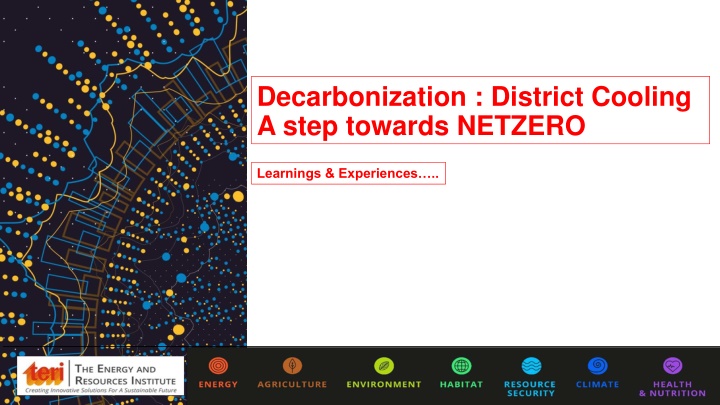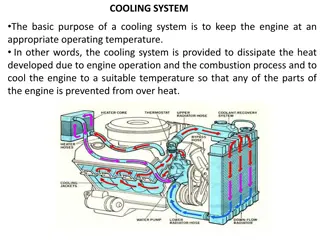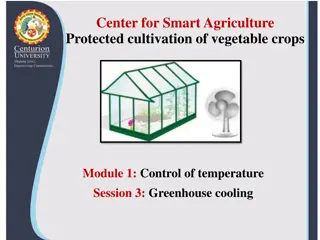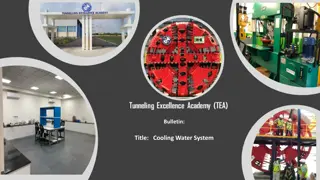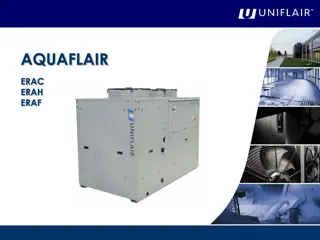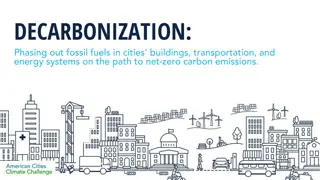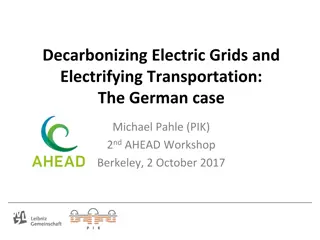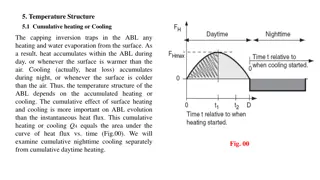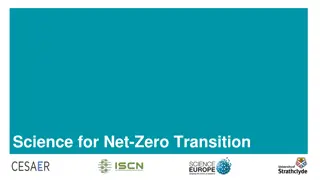Decarbonizing Cities' Cooling Systems: A Step Towards Net Zero
District cooling can play a crucial role in decarbonizing cities to achieve net-zero emissions. By focusing on energy-efficient technologies and clean energy sources, cities can significantly reduce carbon emissions from buildings and industries, making a substantial impact on global climate efforts.
Download Presentation

Please find below an Image/Link to download the presentation.
The content on the website is provided AS IS for your information and personal use only. It may not be sold, licensed, or shared on other websites without obtaining consent from the author.If you encounter any issues during the download, it is possible that the publisher has removed the file from their server.
You are allowed to download the files provided on this website for personal or commercial use, subject to the condition that they are used lawfully. All files are the property of their respective owners.
The content on the website is provided AS IS for your information and personal use only. It may not be sold, licensed, or shared on other websites without obtaining consent from the author.
E N D
Presentation Transcript
Decarbonization : District Cooling A step towards NETZERO Learnings & Experiences ..
WHY CITIES ARE FOCAL POINT? > 50% of Carbon emission comes from Cities 50% of energy demand comes from cities alone As per IEA, 200% increase in cooling demand from air conditioning in the cities urban areas will be home to approximately 70% of the global population
Results & Overview Sector level emissions Stationary energy emissions (Buildings) GHG Emissions 25,082 1,272,560 4,000 Residential buildings 5,724,788 Commercial and institutional buildings and facilities 2,759,078 STATIONARY ENERGY Manufacturing industries and construction TRANSPORTATION 11,136,500 Energy industries 4,971,638 13,287,642 WASTE Agriculture, forestry and fishing activities 21,030,910 Non-specified sources Total Emissions in CITY : 37,892,198 tCO2e
Distribution of residential energy use by end use 35% 32% 32% 30% 25% MT CO2e/Year 20% 18% 15% 9% 10% 4% 4% 5% 0%
Distribution of commercial energy use by end use 30% 24% 25% % commercial energy use 20% 19% 15% 11% 11% 11% 10% 6% 6% 5% 5% 3% 2% 1% 0%
PRACTICALITY OF DISTRICT COOLING high concentration of buildings such as airports, college and university campuses, large hospital complexes, large office and industrial complexes/campuses, sports stadiums and central business districts of larger urban centres LOAD DENSITY To achieve a balance in cooling loads within the interconnected network of buildings, it is important to incorporate a variety of building uses. BUILDING DIVERSITY investments in district cooling systems can be supported by entities that have ability to finance projects with extended payback and depreciation schedules, such as utilities, government facilities, airports, college and university campuses, and hospital campuses ECONOMICS
DECARBONIZING CITIES COOLING SYSTEM . 1 ADAPTATION TO CLEANER GREENER ENERGY ACTION TECHNOLOGY Participating Entities 1. Regional, local Renewable Energy sources 2. Establishment of low carbon energy supply 3. Combined heat and power Generation Promotion of circular economy 1. Trigeneration 2. Integration of Renewable sources such as Solar 3. Thermal energy storage system 4. Biogas if possible! 1. Urban Planners, 2. Local Government 3. Power Discoms 4. Commercial building operators
DECARBONIZING CITIES COOLING SYSTEM 2 BEHAVIOUR RESOURCE USAGE Action 1. Achieving cost savings in operations and maintenance through the utilization of shared equipment rather than separate systems. Complete/Partial shutdown of cooling space when offices are closed. 2. Building design with natural air flow ventilation. Stakeholders 1. Building maintenance staff, workers 2. Architect 3. Residential building occupants 4. Municipal corporation 5. Local government 6. NGOs for the campaign 3. General awareness campaigns before the onset of the summer/winter season. 4. Reduction in energy demand can reduce peak demand on the grid.
DECARBONIZING CITIES COOLING SYSTEM PASSIVE COOLING TECHNOLOGIES Passive cooling techniques offer notable benefits in terms of energy efficiency and reduced financial expenses, rendering them a prudent choice for effective thermal management in various building applications. 3 Solar shading Plants for Passive Cooling Solar shading stands out among various solar passive cooling techniques as a pertinent solution for thermal cooling in buildings, particularly in developing countries. Its cost-effectiveness and ease of implementation make it highly suitable. In rural India and certain Middle Eastern regions, there has been a significant surge in masonry houses with RCC roofs By implementing rooftop greening in urban areas, the reduction in urban climate and microclimate impact, as well as the impact on the indoor climate of buildings located below, can be achieved.
DECARBONIZING CITIES COOLING SYSTEM Examples of Traditional Passive Cooling in India Clays pots are used extensively for cooking and heating due to their extensive heating control mechanism which differs from metal due to their porous structure. Recently UNEP published story on an Indian architect used this for evaporative cooling through beehive structure which can keep the surroundings cooler. The Pearl Academy of Fashion in Jaipur, India employs traditional methods such as jali screens, a spacious water pool, and a cavity wall to establish a microclimate that effectively cools the surrounding air through evaporation and convection
THANK YOU! K. Umamaheswaran
